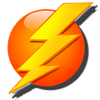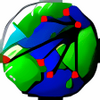Software that teaches the basics developing hardware and circuit boards
Software that teaches the basics developing hardware and circuit boards
Vote: (4 votes)
Program license: Free
Developer: digital circuit design
Version: 1
Works under: Windows
Vote:
Program license
(4 votes)
Free
Developer
Version
digital circuit design
1
Works under:
Windows
Pros
- In-depth circuit design and simulation capabilities
- Modules promote reusability of complex circuits
- Intuitive user interface akin to basic paint programs
- Practical tools for analyzing circuit behavior
- Booleans and graphical component design options
- Customizable components with control pin management
- Provides an effective learning aid for students and educators
Cons
- May require a basic understanding of digital logic design
- More advanced features could seem daunting to beginners
Comprehensive Circuit Design and Simulation
Digital Logic Design is an educational yet practical software application geared toward anyone interested in the creation and simulation of digital circuits. It encompasses a wide array of digital components, from the basic building blocks like logic gates to more complex entities such as an Arithmetic Logic Unit (ALU). The versatility it offers makes it a suitable choice for professionals, enthusiasts, and students who are engaged in the fields of digital logic, computer architecture, or embedded systems.
Designed for Clarity and Reusability
One of the standout features of Digital Logic Design is its ease in transforming intricate circuits into reusable modules. This modularity facilitates the construction of exceedingly sophisticated circuits, such as those found within CPUs. Through this approach, users can build upon their existing work without the need to recreate complex components from scratch, saving valuable time and effort.
User-Friendly Interface and Functionality
The software boasts a user-friendly interface that closely resembles the familiarity of common paint programs, offering a point-and-click experience that considerably lowers the learning curve. Users can design circuits using graphical components, enhancing the visual understanding of complex digital logic. The application's support for Boolean functions in the Sum-of-Product form provides a textual counterpart to the graphical interface, catering to different preferences and reinforcing the learning process.
Real-World Testing with Simulated Outputs
Digital Logic Design provides simulated outputs, such as LEDs and Seven Segment Displays, that allow users to observe and analyze the behavior of their designs in a controlled environment. This direct feedback loop is critical for validating circuit functionality and for educational purposes, where it can vividly demonstrate the principles of digital logic in action.
Customization and Expansion Capabilities
Further adding to its flexibility, the software enables the customization of components. Users have the option to add or remove control pins within a component, allowing for a degree of personalization and refinement typically reserved for more advanced tools. This adaptability makes the software a more valuable resource for a wider range of projects.
Learning and Teaching Digital Logic
Instructors teaching digital logic and computer design can seamlessly integrate Digital Logic Design into their curriculum. The ability to visualize circuits and their workings can significantly enhance the understanding of abstract concepts, thus providing an indispensable tool for education in the ever-evolving field of digital technologies.
Pros
- In-depth circuit design and simulation capabilities
- Modules promote reusability of complex circuits
- Intuitive user interface akin to basic paint programs
- Practical tools for analyzing circuit behavior
- Booleans and graphical component design options
- Customizable components with control pin management
- Provides an effective learning aid for students and educators
Cons
- May require a basic understanding of digital logic design
- More advanced features could seem daunting to beginners



